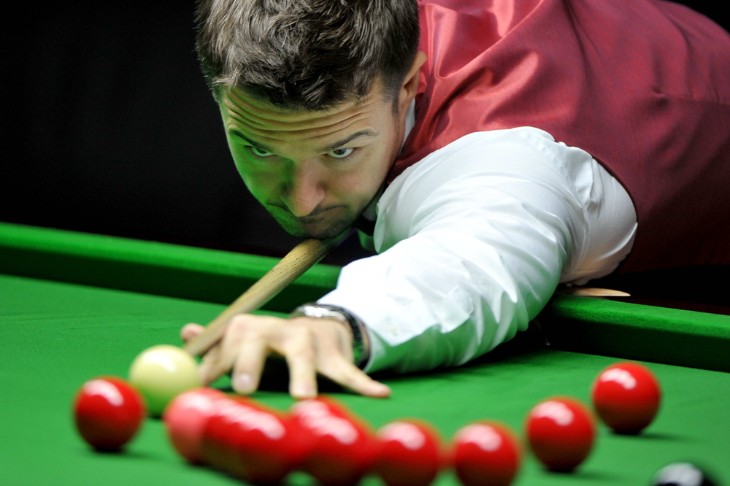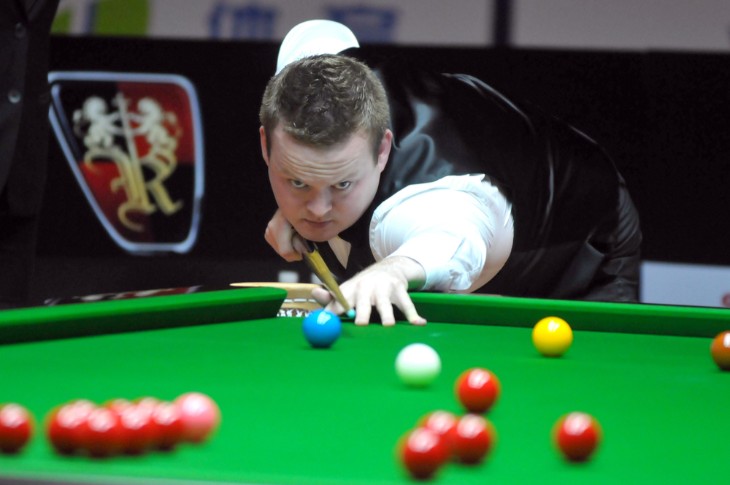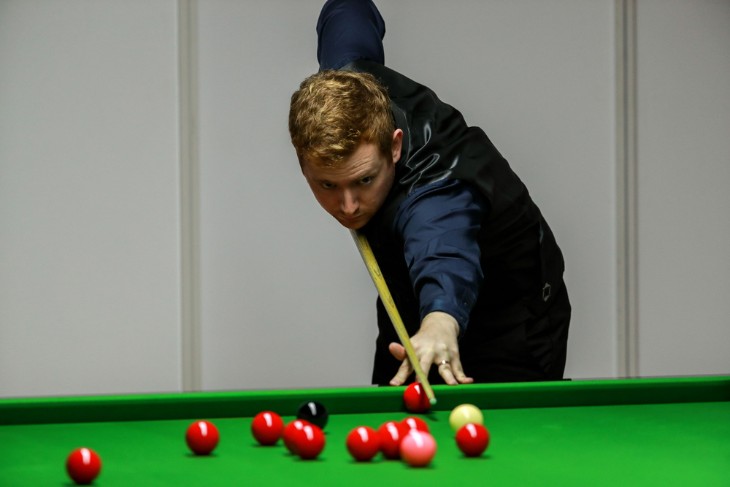In the world of snooker betting, every detail matters. From the skill of the players to the conditions of the table, bettors analyze various aspects to make informed decisions. One intriguing aspect of snooker betting is the "Number of Reds Potted in a Frame." This specific bet focuses on predicting how many red balls will be potted during a single frame of a snooker match.
In this comprehensive guide, we'll delve into the intricacies of this unique betting option, providing insights, strategies, and tips to help you make successful bets.
Understanding the Number of Reds Potted in a Frame
The Basics
When it comes to snooker betting, understanding the basics is essential. One intriguing betting option is predicting the "Number of Reds Potted in a Frame." In this section, we'll break down the fundamentals of this unique bet in a simple manner.
In snooker, a game typically starts with a setup of 15 red balls on the table. Each red ball is worth one point. The objective of the game is to pot these reds, followed by the coloured balls, to accumulate points and ultimately win the frame or match.
Now, when you're betting on the "Number of Reds Potted in a Frame," you're essentially predicting how many of these red balls the players will successfully pot during a single frame of the snooker match.
To put it, if you bet on a low number, you're anticipating that the players won't pot many reds in that particular frame. Conversely, if you bet on a high number, you're expecting the players to pot a significant number of reds during the frame.
It's important to note that there are a total of 15 red balls available at the start of each frame. This means that the maximum number of reds that can be potted in a single frame is 15.
How It Works
Betting on the "Number of Reds Potted in a Frame" in snooker is a straightforward yet engaging way to add excitement to your snooker viewing experience. Here's how it works:
To get started, you'll need to place your bet with a bookmaker or on a betting platform that offers snooker betting markets. When you select the "Number of Reds Potted in a Frame" market, you'll be presented with various options. These options typically include a range of numbers, such as 0-3, 4-7, 8-11, and 12-15.
Each range represents a different outcome. For example, if you bet on the range 0-3, you're predicting that the players will pot between 0 and 3 red balls during the frame. If you choose the range 8-11, you're expecting a higher number of reds to be potted, specifically between 8 and 11.
The outcome of your bet depends on the actual number of red balls potted in the frame. Let's say you placed a bet on the range 4-7. If, by the end of the frame, the players have potted a total of 6 red balls, your bet is a winner. If they pot fewer than 4 or more than 7, your bet is not successful.
Several factors can influence the "Number of Reds Potted in a Frame." Player skill, their approach to the frame, and the difficulty of the shots all play a role. Additionally, the context of the match matters; in high-stakes situations, players may opt for more conservative strategies, aiming to control the game rather than potting many reds.
Successful betting on this market often requires a good understanding of the players' form, their historical performance, and their playing styles. Additionally, analyzing the match conditions, including the state of the frame and the overall match score, can provide valuable insights.

Factors Influencing the Number of Reds Potted
Player Skill
In snooker, the skill level of the players involved in a match is a crucial factor in determining the number of reds potted in a frame. Here's how player skill impacts this aspect of the game:
- Potting Accuracy: Skilled snooker players have a higher level of potting accuracy. They can consistently pocket red balls, even from difficult positions on the table. Their ability to control the cue ball allows them to set up precise shots, increasing the chances of potting more reds. Player skill often translates to better cue ball control, which is essential for potting consecutive reds. A skilled player can position the cue ball for the next shot with greater accuracy, creating opportunities to continue potting reds.
- Positional Play: Experienced snooker players excel in positional play, which involves setting up the cue ball for the next shot. By positioning the cue ball strategically after potting red, skilled players ensure they have a clear shot at the next red ball. This aspect of player skill is vital for maximizing the number of reds potted in a frame. A player who can consistently position the cue ball for easy potting opportunities is more likely to pot multiple reds.
- Safety Play Awareness: While potting reds is essential, knowing when to play safe and avoid potting reds is also a sign of skill. Skilled players assess the situation on the table, including the match score and frame context, to make informed decisions about whether to continue potting reds or shift to a safety-oriented approach. Sometimes, playing safe and focusing on controlling the game's tempo is the smarter choice, especially in close matches.
Table Conditions
Table conditions play a vital role in determining the number of reds potted in a frame in snooker. Understanding how different factors related to the table affect the game is essential for making informed bets. Here are some key aspects of table conditions to consider:
- Cloth Quality: The quality of the cloth covering the snooker table is a critical factor. High-quality cloth provides a smooth and consistent playing surface, allowing for precise shots. When the cloth is in excellent condition, the balls tend to roll more predictably, increasing the likelihood of reds being potted. Poorly maintained or worn-out cloth can lead to unpredictable ball behaviour, making it challenging for players to control their shots. Bettors should consider the condition of the cloth when assessing the potential number of reds potted.
- Table Speed: The speed of the table refers to how fast or slow the balls travel across the cloth. Faster tables result in balls covering more distance with each shot, while slower tables require more force to move the balls. The table speed can influence a player's ability to pot reds. A faster table might lead to more reds being potted as the balls travel farther, potentially creating more potting opportunities. However, it also requires precise control to avoid potting the cue ball.
- Table Temperature and Humidity: Snooker tables are sensitive to changes in temperature and humidity. Variations in these conditions can affect the rolling behaviour of the balls. Warmer and more humid conditions can make the cloth slower, while cooler and drier conditions can speed it up. Bettors should consider the playing environment and whether any adjustments have been made to compensate for temperature and humidity changes. These adjustments can impact a player's ability to pot reds accurately.
- Table Maintenance: Regular maintenance of the snooker table is essential to ensure fair and consistent play. Well-maintained tables, with level pockets and rails, contribute to a more enjoyable and competitive game. Tables with uneven pockets or rails can lead to unexpected outcomes, affecting the number of reds potted. Bettors should gather information about the maintenance standards of the table in use.
Player Strategy
Player strategy in snooker is a crucial aspect that greatly influences the outcome of a frame. Let's break down the key elements of player strategy in a straightforward manner:
- Shot Selection: Players carefully choose which red balls to pot based on their positions on the table. The choice of shots can significantly impact the number of reds potted in a frame. Analyzing a player's shot selection is essential for predicting their performance. Some players are more aggressive in potting reds, while others opt for safer shots.
- Cue Ball Control: Controlling the cue ball's position after potting a red is vital. Skilful cue ball control allows players to line up their next shots for consecutive red pots. When assessing a player's strategy, it's important to consider their ability to control the cue ball effectively. Those with better control can maintain momentum during a break.
- Safety Play: Players sometimes choose to play safe by not attempting risky pots. Safety play can result in fewer reds being potted as the game becomes more tactical. Understanding a player's inclination towards safety play is essential for predicting the number of reds they might pot. Some players prioritize safety over aggressive potting.
- Break Building: Break building involves potting reds in succession while transitioning to high-value coloured balls. Players skilled in break-building can accumulate points by consistently potting reds. Bettors should assess a player's ability to build substantial breaks. Strong break builders often pot multiple reds in a single turn.
- Risk Management: Risky shots can lead to spectacular potting sequences or missed pots. Players' risk tolerance levels can greatly affect their red-potting outcomes. Evaluating a player's willingness to take risks is crucial for predicting their performance. Some players are known for their aggressive style, while others prefer a more cautious approach.

Strategies for Betting on Reds Potted
Player Form Analysis
When it comes to snooker betting, analyzing a player's form is a fundamental aspect. Here's a concise breakdown of how to assess a player's form effectively:
- Recent Performance: Start by looking at a player's recent performance in snooker tournaments. Check if they have been consistently winning or if they have faced a series of losses. A player's recent form often indicates their current level of skill and confidence. Those with a string of victories may be in better form.
- Head-to-Head Records: Examine a player's head-to-head records against their upcoming opponent. Pay attention to whether they have a history of dominating or struggling against specific opponents. Head-to-head records provide insights into how well a player matches up against others. Consistent victories suggest good form against specific opponents.
- Performance Trends: Analyze the player's performance trends over a longer period, not just recent matches. Look for patterns of improvement or decline in their game. Consistency in performance or noticeable trends can help bettors gauge a player's overall form.
- Tournament History: Consider a player's history in the specific tournament they are participating in. Some players excel in certain events while underperforming in others. A player's past success or struggles in a particular tournament can indicate their comfort level and form in that setting.
- Psychological Factors: Take into account any known psychological factors that may affect a player's form. Factors like confidence, focus, and motivation can significantly impact performance. Understanding a player's mindset and mental state is essential when assessing their form.
Historical Performance
Analyzing a player's historical performance in snooker can provide valuable insights for betting decisions. Here's how to assess historical performance effectively:
- Tournament Wins and Titles: Start by examining the number of tournament wins and titles a player has secured throughout their career. Pay attention to prestigious events like the World Snooker Championship. Tournament wins and titles reflect a player's overall success and their ability to perform under pressure.
- Consistency Over the Years: Evaluate a player's consistency in maintaining a high ranking over multiple seasons. Look for players who consistently reach the later stages of tournaments. Consistency in performance indicates a player's ability to maintain a high level of play over the years.
- Records and Achievements: Check if a player holds any records or notable achievements in snooker. Records can include highest breaks, maximum breaks, or fastest match victories. Records and achievements showcase a player's exceptional skills and memorable moments in the sport.
- Major Tournament Performances: Assess a player's performance in major tournaments, such as the UK Championship or the Masters. Note if they have won or reached the finals in these prestigious events. Success in major tournaments demonstrates a player's capability to excel on big stages.
- Evolution of Playing Style: Analyze how a player's playing style has evolved over the years. See if they have adapted their game to match the changing dynamics of snooker. Players who adapt and evolve their style tend to have longer and more successful careers.
Conclusion
Betting on the "Number of Reds Potted in a Frame" adds an exciting dimension to snooker betting. By understanding the factors that influence this bet and employing strategic analysis, you can increase your chances of making successful predictions. Remember to consider player skill, table conditions, player strategies, and the match situation when placing your bets. With the right insights and strategies, you can navigate the world of snooker betting with confidence. Stay alert, analyze the reds, and enjoy the thrill of making informed bets.




.webp)


 (1).webp)




















